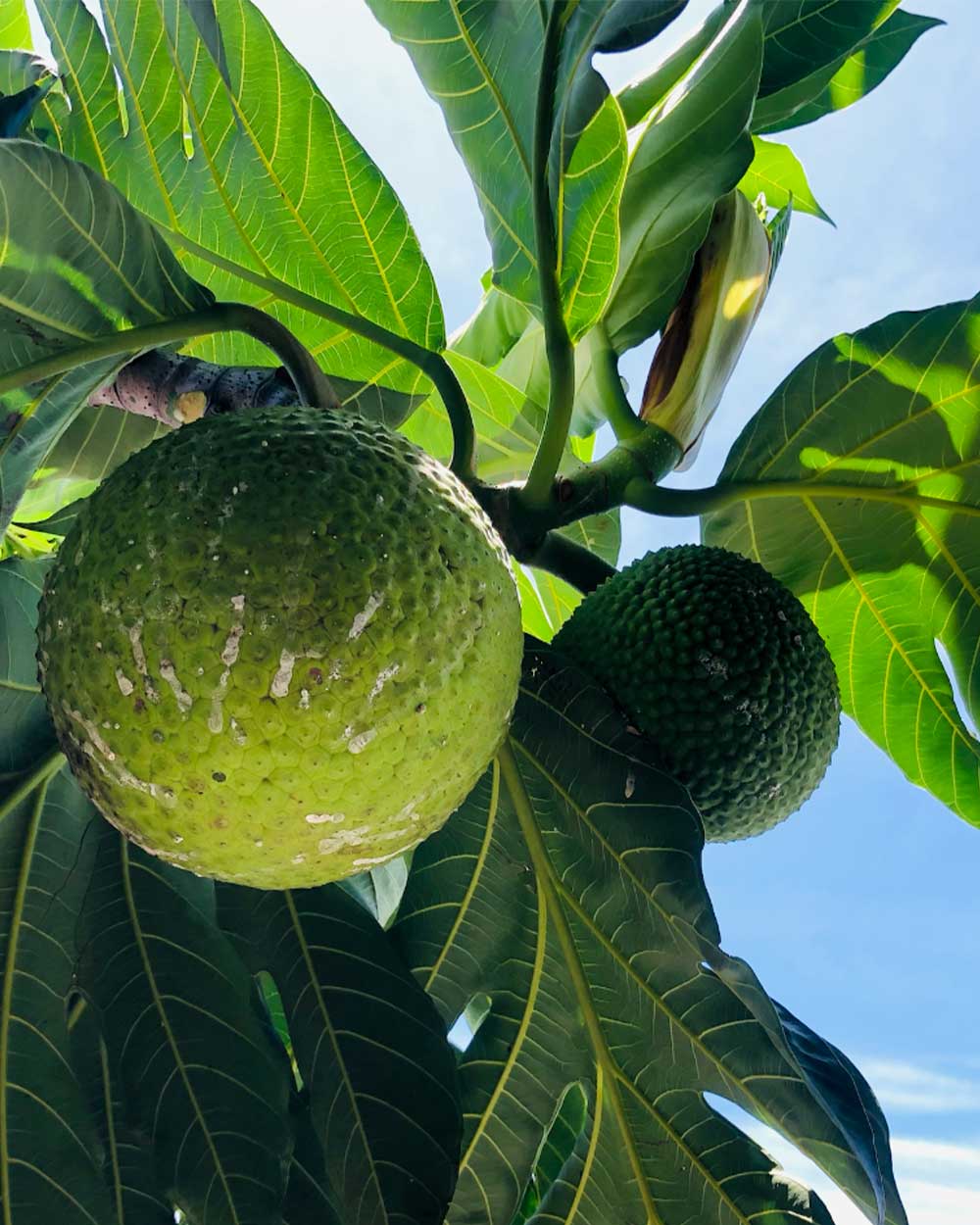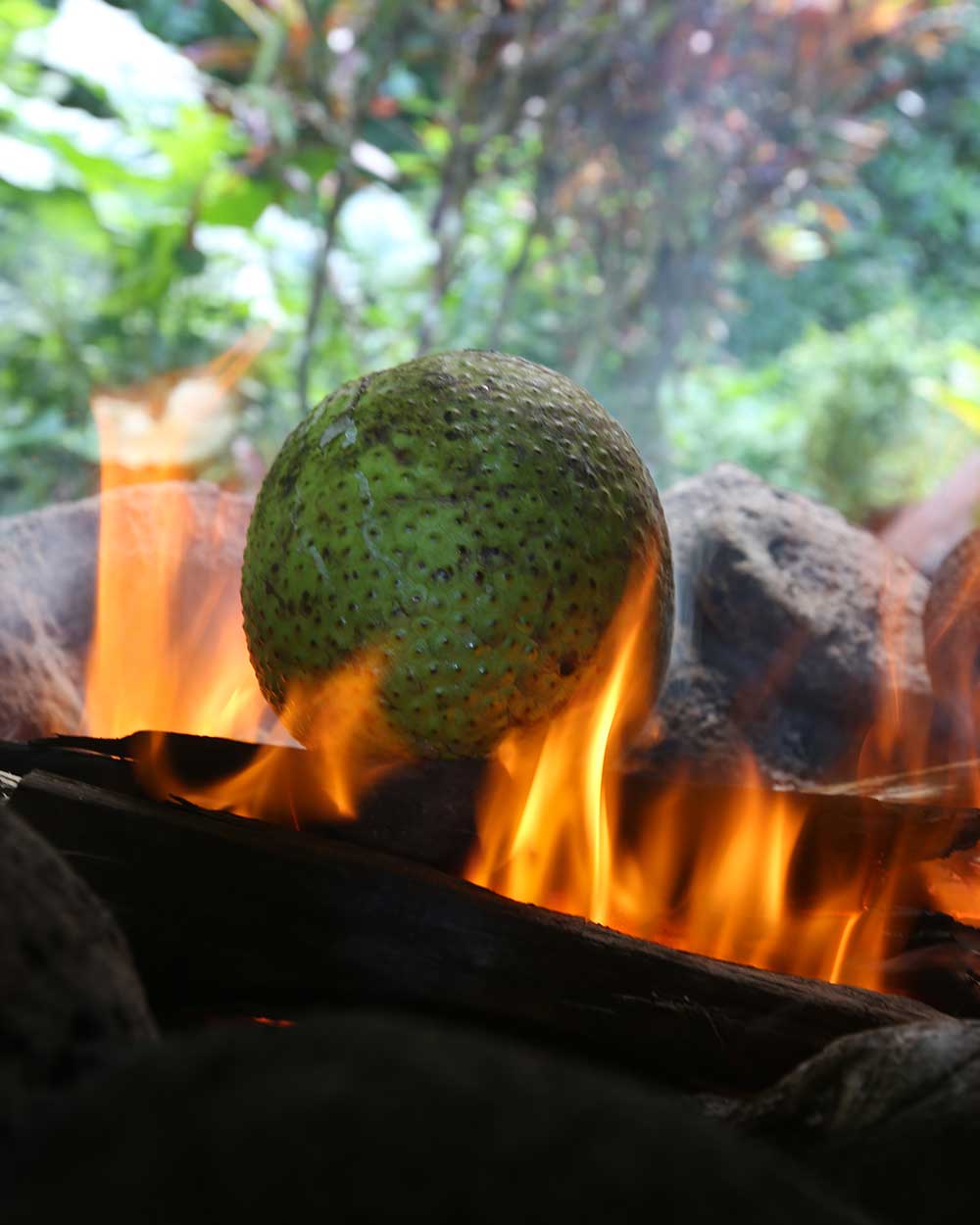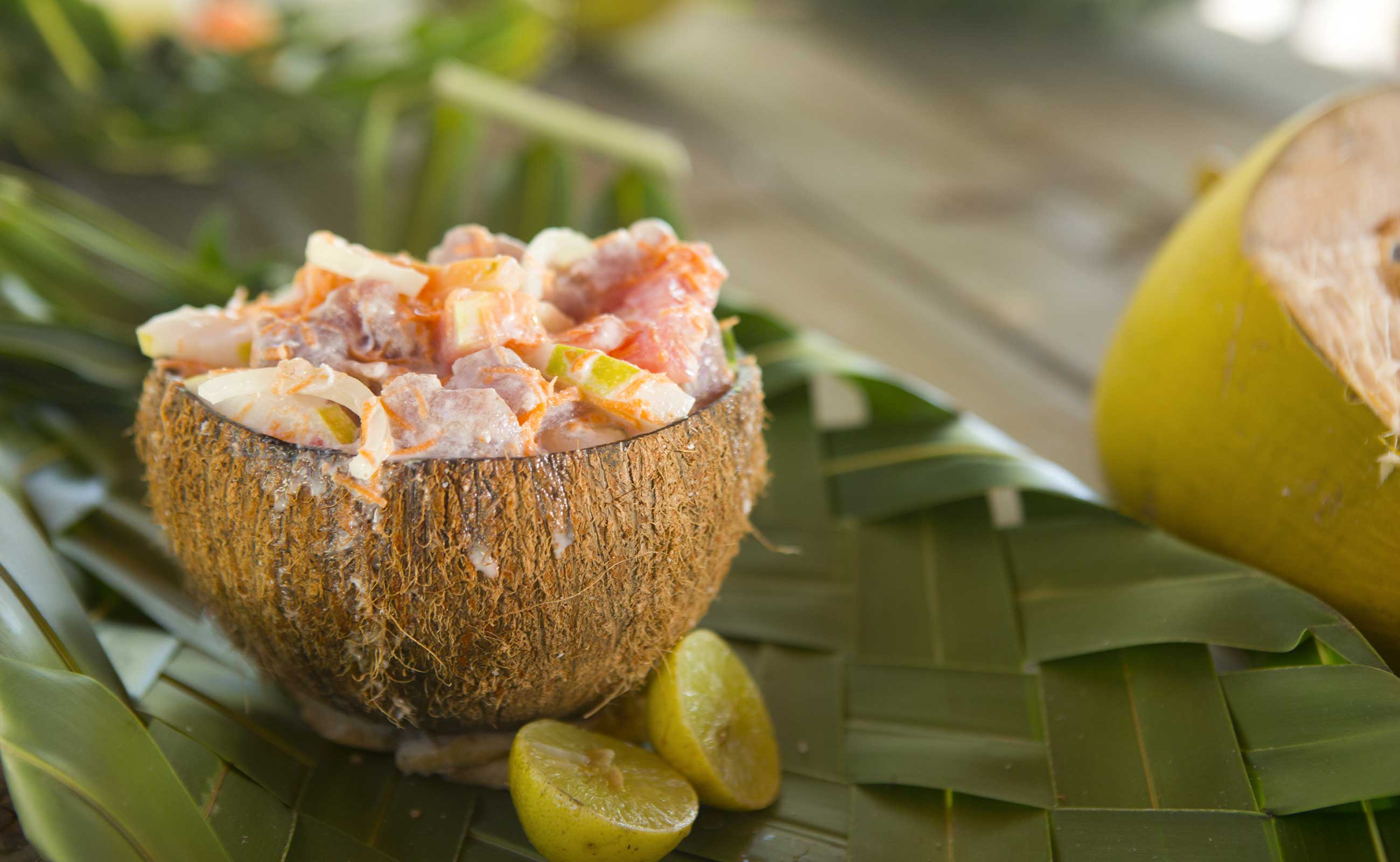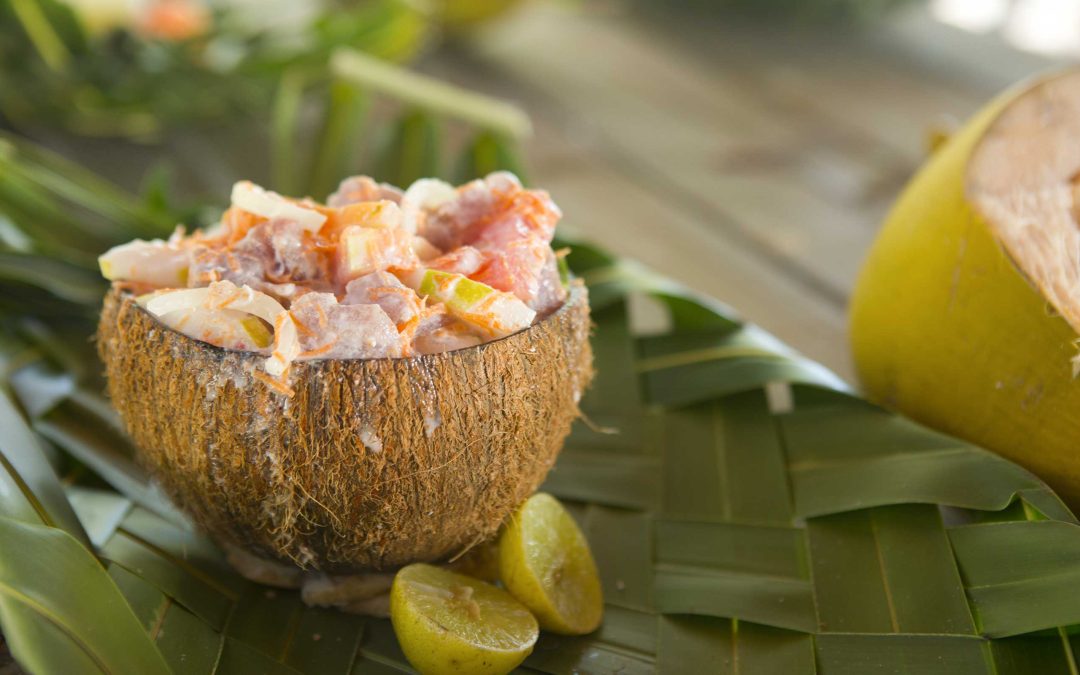Eating well on board is less about a luxury and more about smart sailing. So, what if the Pacific Puddle Jump sailors were to savor a stopover steeped in Polynesian culi-nary traditions? Cooking creates a genuine bond with the people of Fenua.
“Full bellies keep the boat steady in foul winds or calm waters.” This French saying might make you smile, but food is really important at sea. It affects the crew’s stamina as well as their state of mind. A good meal, however modest, is a welcome break in the daily routine of your journey to French Polynesia.
Sailing is tiring. Even if you are sitting or just drifting gently downwind, your body is constantly adjusting to the boat’s movement. Sun burns calories, wet weather takes its toll, and night watches chip away at your ability to stay alert. Eating properly keeps you clear-headed, hydrated, and alert. And most of all… united. Even in a cramped galley, cooking and sharing a meal brings the crew together.
A steaming casserole can ease many a tension.
Cooking freshly caught fish on board is not only a real pleasure at sea, but a great way to enjoy fresh, healthy, and tasty food. After catching it, you must gut it and rinse it with seawater.
From a practical point of view, cooking on board means keeping things simple, effi-cient, and flexible, in a small space with limited equipment, and on a moving boat.
You should opt for quick, easy recipes with few steps and ingredients, and minimal cleanup—like fish en papillote with canned vegetables, raw fish, or pan-fried fish at anchor.

Iconic Fāfaru Dish
Tahitian-style raw fish is a signature dish of French Polynesia. Light, nourishing, and easy to prepare, it can even lead to a friendly interaction with the locals at anchor. It is a simple, heartfelt way to connect—with a knife and a lime, and a little local know-how. Fish reigns supreme here: raw, marinated, grilled, skewered, or sashimi slices, there are countless variations. The seasonings alone invite you on a journey: vanilla, lime, ginger, curry, coconut milk, and more. On top of that are the unexpected local delicacies, like fāfaru, a surprising specialty of fish fermented in seawater with river prawn heads. The smell is pungent, but the flavor is rich and addictive to discerning palates.
To make a Tahitian-style raw fish dish, Maeva Shelton, renowned chef and cookbook author, recommends the following ingredients for six people: 500 g (1.10 lb) tuna (red or white), 4 limes, 1 tomato, 1 carrot, half a cucumber, 1 small onion, 1 handful of chopped parsley and grated coconut milk.
Grilled ‘Uru
Finely chop an onion and place it in a large bowl, then add the fish and some finely diced tomatoes. Grate a carrot and peel and slice some seedless cucumber into half-moons. Keep the bowl cool if necessary.
Ten minutes before serving, pour lime juice into the mixture and stir well. Leave to stand for a few minutes, stirring occasionally to turn the fish white. It is said to ‘cook.’ Add the coconut milk just before you serve. Garnish with parsley and serve immedi-ately with rice.
Another typical Fenua recipe features the ‘uru or breadfruit, grilled whole in its skin over glowing embers. When it has blackened, it is easy to remove the skin with a ta-blespoon, revealing soft, wholesome flesh. This is a great way to share a taste of the local culture—finger-food style—at anchor or on a stern-mounted barbecue.
When you learn to cook a local dish, you get to know the ingredients, methods, and culture behind it. You open yourself up to others. The Pacific Puddle Jump unites sail-ors on the ocean, and Polynesian food does the same on land. Sometimes, just a squeeze of lemon on some raw fish can turn an adventure into a memorable encoun-ter.

culinary vocabulary
‘Ā’ahi : tuna
Ahima‘a : traditional Tahitian oven
Faraoa : bread
Ma’a : food
Ma’a hotu : fruit
Mei’a : banana
Painapo : pineapple
Po‘e : a dish made with fruit or root vegetables, mixed with starch and oven-baked.
Pota : cabbage
Pua’a rōtī : oven–smoked and roasted pork
Tāmā‘a :food is served
Tāmā’a maita‘i : enjoy your meal
photo credit
01 – © Tahiti Tourisme
02 – © Vincent Lyky/Tahiti Tourisme
03 – © Tiphaine Isselé


